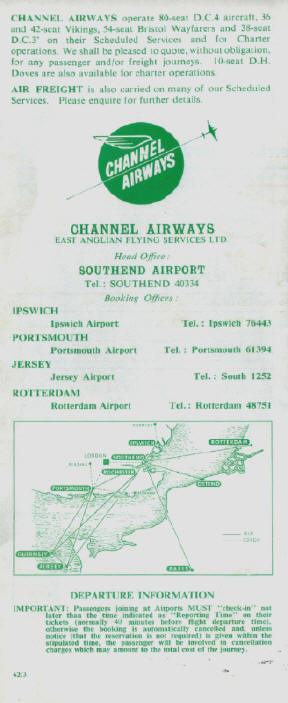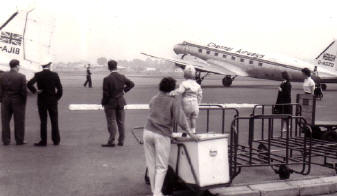
Afterwards
This was not a well publicised accident and after some screaming headlines, it quickly faded, only the local papers on the Isle of Wight and at Channel's home base of Southend providing long term coverage. Unfortunately that was not the case for survivors, relatives and witnesses who had to live with the result.
Of the 17 people on board, seven survived the crash, but two died later in hospital.
The flight crew perished with their passengers on the hillside -
Among the dead were mothers and children, honeymoon couples, a student and service personnel. Some had booked the return flight a long time before, yet others, like the crew, seem to have been there almost by chance. The survivors were in hospital for almost a year and suffered terribly, although those to whom we have spoken show no bitterness or recrimination and are the nicest people you could wish to know. Airline staff and management were deeply distressed as the Company was close knit and very much a 'local' operation. One stewardess, a good friend of the one on the plane, handed in her notice and walked out, but mostly they all closed ranks and pressed on regardless.
That this was the first and only passenger fatality in a long operating history and left a deep mark in what was a very safe operation. Likewise rescuers, witnesses and families were deeply traumatised and still have memories of the events on that fog shrouded hillside. And somehow, even for those who were not there on that awful day, this accident never quite goes away. It seems to have ripples in time that started on that day and over 50 years later are still resonant, facts and memories still coming to the surface and casting a new light on aspects of this tragedy.

There was a beneficial result, if anything that followed this accident can possibly be called that.
After the accident enquiry, aircraft documentation, navigational procedures and flight information were improved and all passenger airports were required to have radio communications. The situation regarding weather minima was clarified.
Sadly, and as usual, it took fatalities to overcome inertia and for the 'powers that be' to be shamed into introducing regulations that should have been in place and enforced long before 1962.
Operator licensing and bureaucracy had taken precedence over basic safety with predictable results. A familiar story?

Over 50 years on there is little that can be done to reopen the investigation. It would be pointless and distressing to survivors , relatives and indeed all those involved.
It all happened a long while ago and time is a great healer, even if loved ones are never forgotten. Although the loss of life was relatively low compared with other aviation disasters, this crash somehow seems to epitomise all the human tragedy, horror and distress that occurs when an airliner is lost. Shattered lives, broken families, a deep sadness and for some, a loneliness that continues to this day.
Hopefully the small memorial on a windswept hillside and this website will serve as a memorial; perhaps their loss will not fade into history.
The 1960's were a time when when people were trusted and scenes like this were common at smaller airports. It was a more genteel age, but under the surface much the same as today.
| Instruments |
| Visibility |
| Navigation |
| An Alternative Theory |
| Pressure On Crews |
| Blame |